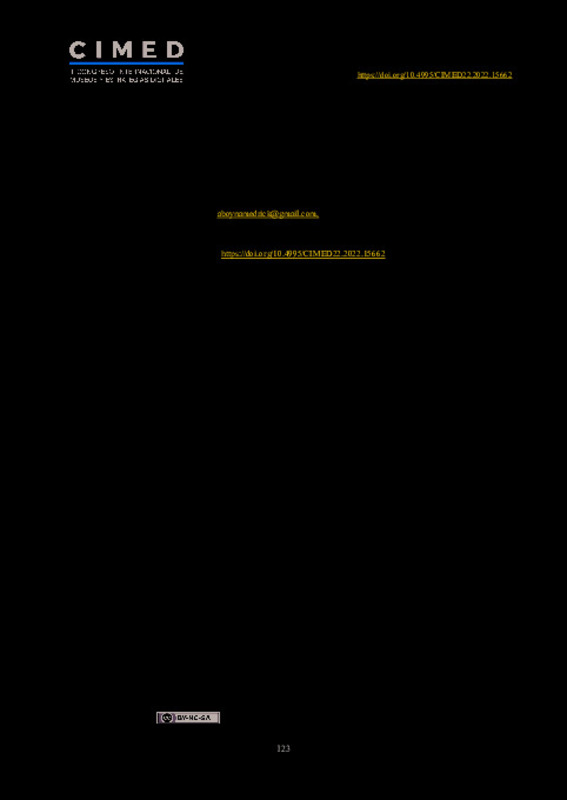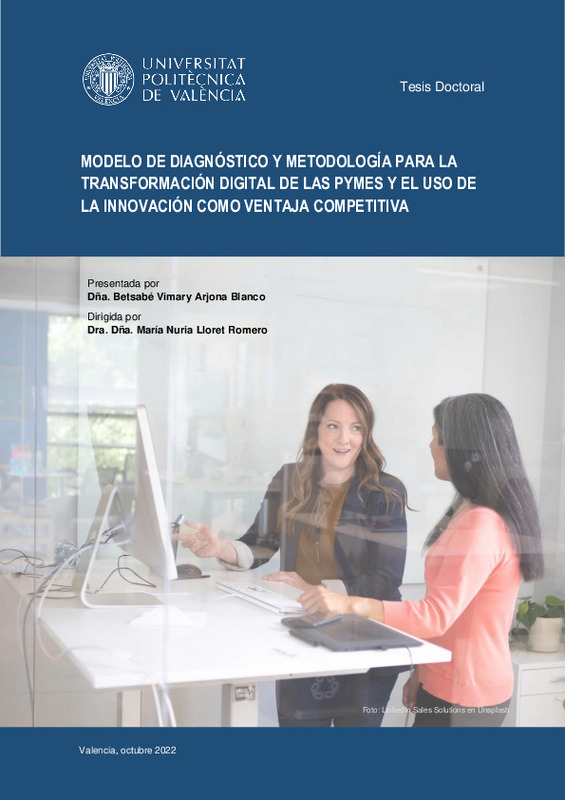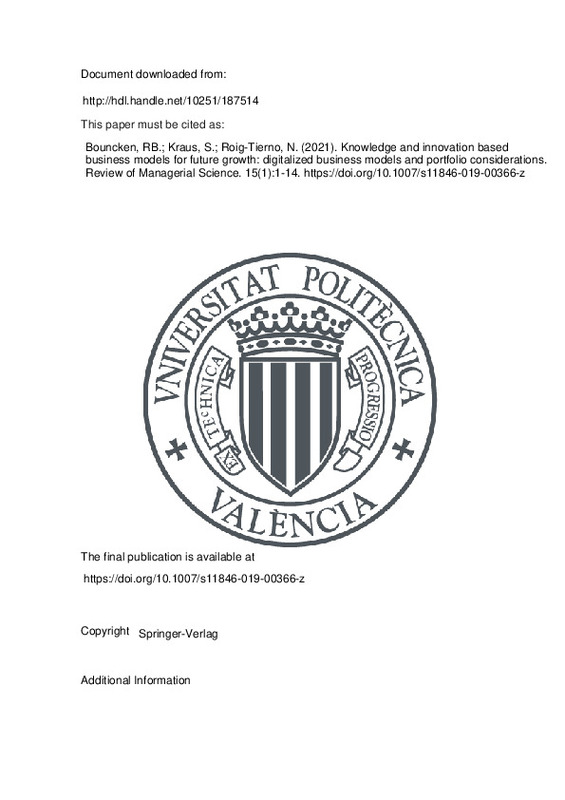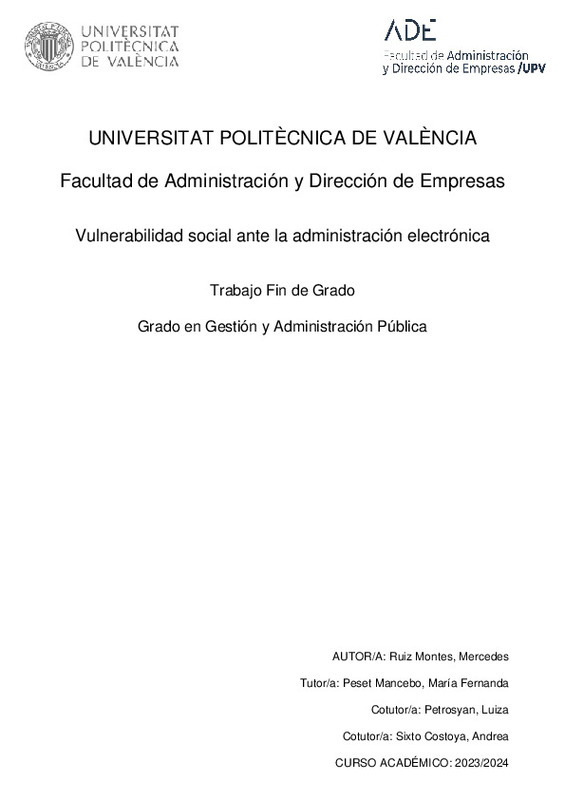JavaScript is disabled for your browser. Some features of this site may not work without it.
Buscar en RiuNet
Listar
Mi cuenta
Estadísticas
Ayuda RiuNet
Admin. UPV
El marketing digital del Museo del Virreinato de San Luis Potosí como modelo de las buenas prácticas de estrategias digitales
Mostrar el registro sencillo del ítem
Ficheros en el ítem
| dc.contributor.author | Aguilar Martínez, Ricardo
|
es_ES |
| dc.coverage.spatial | east=-100.9740262; north=22.15071649999999; name=Museo del Virreinato de San Luis Potosí, 78000 San Luis, S.L.P., Mèxic | es_ES |
| dc.date.accessioned | 2022-11-09T12:53:11Z | |
| dc.date.available | 2022-11-09T12:53:11Z | |
| dc.date.issued | 2022-10-25 | |
| dc.identifier.isbn | 9788413960692 | |
| dc.identifier.uri | http://hdl.handle.net/10251/189510 | |
| dc.description.abstract | [EN] The Museum of the Viceroyalty of San Luis Potosí is located in a former convent of the Order of Discalced Carmelites, from the 18th century, in the heart of the historic center of the city of San Luis Potosí, which opened its doors in 2003 with an important collection of Viceroyalty art on loan that was gradually withdrawn by private collectors and that left, by 2020, the museum without a collection, with only less than 10 pieces of the collection owned by the museum. In 2018, a digital marketing specialist arrived, who incorporated into the museum a new proposal for a face-to-face and digital strategy that would achieve the museum's objective: to disseminate the colonial art of San Luis Potosí, and for this a long-term plan was proposed. term to 5 years. However, in the year 2020, the closure of the museum ended up worsening the circumstances due to the fact that its number of admissions had declined in the last three years prior to the marketing strategy, and it did not officially have digital proposals to comply with the mission of the enclosure until the end of 2017 and the beginning of 2018. For this reason, during the first two semesters of the pandemic, the digital dissemination program was accelerated, which achieved an exponential growth of the museum, reaching more than 500 thousand users in the networks social and incorporating new communication models that allowed the participation of researchers, students and the general public in digital activities that quickly placed the museum as one of the most important spaces in central Mexico in the dissemination and dissemination of colonial art. The museum's digital strategy managed to incorporate 25 countries in Latin America, including Spain, by 2021, forcing the space to change its objective from being local to international, changing its mission: "disseminate and disseminate viceroyalty art in San Luis Potosí, Mexico and America». An outreach program, called #VirreinalArteJuevesdeJuevesdeArteVirreinal, which incorporates audiences in Latin America and Spain, emerged from this digital program. The Vatican Museums, the Prado National Museum and researchers from the Metropolitan Museum of New York are some examples of the collaborations we have had, considering that the only permanent collection is the 18th century building, in which the space is located. museum, and the few pieces that the collection protects. | es_ES |
| dc.description.abstract | [ES] El Museo del Virreinato de San Luis Potosí está ubicado en un exconvento de la orden de carmelitas descalzos, del siglo XVIII, en el corazón del centro histórico de la ciudad de San Luis Potosí que abrió sus puertas en el año 2003 con una importante colección de arte virreinal en comodato que, paulatinamente, fue retirada por parte de los coleccionistas privados y que dejó, para el año 2020, al museo sin colección, contando únicamente con menos de 10 piezas del acervo propiedad del museo.En el año 2018, llegó un especialista en marketing digital, que incorporó al museo una nueva propuesta de estrategia presencial y digital que lograra cumplir con el objetivo del museo: divulgar el arte virreinal de San Luis Potosí y para ello se propuesto un plan a largo plazo a 5 años. Sin embargo, en el año 2020, el cierre del museo terminó por empeorar las circunstancias debido a que su número de ingresos había decaído en los últimos tres años anteriores a la estrategia de marketing y no contaba, oficialmente, con propuestas digitales para cumplir con la misión del recinto hasta finales de 2017 y principios de 2018. Por ello, durante los dos primeros semestres de la pandemia, se aceleró el programa de divulgación digital que logró un crecimiento exponencial del museo, logrando alcances superiores a los 500 mil usuarios en las redes sociales e incorporando nuevos modelos de comunicación que permitieron la participación de investigadores, estudiantes y público general en actividades digitales que rápidamente colocaron al museo como uno de los espacios más importantes en el centro de México en la divulgación y difusión del arte virreinal. La estrategia digital del museo logró incorporar hasta el 2021 a 25 países en América Latina, incluyendo a España, y obligando al espacio a cambiar su objetivo que pasó de ser local a internacional, cambiando su misión: «divulgar y difundir el arte virreinal en San Luis Potosí, México y América».De dicho programa digital se desprendió un programa de divulgación, denominado #JuevesdeArteVirreinal, que incorpora a públicos en América Latina y España. Los Museos Vaticanos, el Museo Nacional del Prado e investigadores del Museo Metropolitano de Nueva York son algunos ejemplos de las colaboraciones que hemos tenido, tomando en cuenta, que la única colección permanente es el edificio del siglo XVIII, en el que se ubica el espacio museístico, y las pocas piezas que resguarda la colección. | es_ES |
| dc.format.extent | 8 | es_ES |
| dc.language | Español | es_ES |
| dc.publisher | Editorial Universitat Politècnica de València | es_ES |
| dc.relation.ispartof | CIMED22 - II Congreso internacional de museos y estrategias digitales | |
| dc.rights | Reconocimiento - No comercial - Compartir igual (by-nc-sa) | es_ES |
| dc.subject | Estrategia digital | es_ES |
| dc.subject | Marketing digital | es_ES |
| dc.subject | Buenas prácticas digitales | es_ES |
| dc.subject | Divulgación | es_ES |
| dc.subject | Difusión | es_ES |
| dc.subject | Digital strategy | es_ES |
| dc.subject | Digital marketing | es_ES |
| dc.subject | Good digital practice | es_ES |
| dc.subject | Disclosure | es_ES |
| dc.subject | Dissemination | es_ES |
| dc.subject | Colonial art | es_ES |
| dc.subject | Arte virreinal | es_ES |
| dc.title | El marketing digital del Museo del Virreinato de San Luis Potosí como modelo de las buenas prácticas de estrategias digitales | es_ES |
| dc.title.alternative | The digital marketing of the Viceroyalty Museum of San Luis Potosí as a model of good practices of digital strategies | es_ES |
| dc.type | Capítulo de libro | es_ES |
| dc.type | Comunicación en congreso | es_ES |
| dc.identifier.doi | 10.4995/CIMED22.2022.15662 | |
| dc.rights.accessRights | Abierto | es_ES |
| dc.description.bibliographicCitation | Aguilar Martínez, R. (2022). El marketing digital del Museo del Virreinato de San Luis Potosí como modelo de las buenas prácticas de estrategias digitales. En CIMED22 - II Congreso internacional de museos y estrategias digitales. Editorial Universitat Politècnica de València. 123-130. https://doi.org/10.4995/CIMED22.2022.15662 | es_ES |
| dc.description.accrualMethod | OCS | es_ES |
| dc.relation.conferencename | Congreso CIMED - II Congreso Internacional de Museos y Estrategias Digitales | es_ES |
| dc.relation.conferencedate | Octubre 19-28, 2022 | es_ES |
| dc.relation.conferenceplace | Valencia, España | es_ES |
| dc.relation.publisherversion | http://ocs.editorial.upv.es/index.php/CIMED/Cimed22/paper/view/15662 | es_ES |
| dc.description.upvformatpinicio | 123 | es_ES |
| dc.description.upvformatpfin | 130 | es_ES |
| dc.type.version | info:eu-repo/semantics/publishedVersion | es_ES |
| dc.relation.pasarela | OCS\15662 | es_ES |











